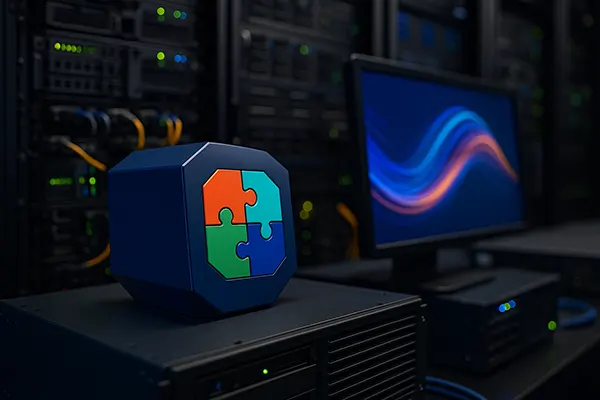
Server-Side WebAssembly (Wasm on Servers): Capabilities, Limitations, and Best Practices
WebAssembly (Wasm) has evolved from being a client-side technology for running high-performance code in browsers to becoming a powerful tool on servers. In 2025, developers are increasingly adopting Wasm runtimes like Wasmtime, Wasmer, and Spin to execute secure, portable, and fast backend workloads. This article explores the modern capabilities of server-side Wasm, its challenges, and practical recommendations for backend engineers.
How WebAssembly Compares with Traditional Runtimes
When comparing WebAssembly with environments such as Node.js, JVM, or .NET, the biggest advantage lies in its sandboxed execution model. Wasm modules can run with minimal system access, reducing attack surfaces. Unlike the JVM, which depends on complex garbage collection and large runtime libraries, Wasm is designed to be minimal and predictable in performance.
Another key strength of Wasm is its portability. Developers can compile code from languages like Rust, Go, or C++ into Wasm and execute it in any supported runtime environment. This makes Wasm ideal for multi-platform backend services where lightweight deployment and deterministic behaviour matter.
However, while Node.js and JVM ecosystems provide mature dependency management and libraries, Wasm still lacks this maturity. Many WebAssembly projects depend on host-provided APIs, making integration more complex compared to established server runtimes.
Runtime Performance and Resource Efficiency
Server-side Wasm is known for its startup speed. Wasmtime and Wasmer can initialise modules in milliseconds, outperforming cold-start times typical in container-based applications. This makes Wasm an appealing option for serverless functions and microservices.
Memory and CPU usage are also tightly controlled. Developers can define strict resource limits at runtime, preventing modules from consuming more than allowed. This predictability is crucial for systems that must maintain stability under load, such as IoT gateways or financial transaction processors.
Still, Wasm’s linear memory model poses some limitations. It requires explicit management and may introduce complexity when working with high-level data structures or multi-threading. Ongoing efforts like the WASI-threads proposal aim to bridge this gap by introducing safe concurrency primitives.
Choosing a Wasm Runtime and Packaging Modules
When selecting a runtime, the choice often depends on deployment needs. Wasmtime is preferred for production-ready backends with WASI support, while Wasmer focuses on embedding capabilities and language flexibility. Spin, developed by Fermyon, offers an opinionated framework for building lightweight microservices.
Module packaging in Wasm follows a container-like philosophy. Each Wasm module contains compiled bytecode and metadata, which can be distributed via registries similar to Docker Hub. The goal is to achieve isolation and reproducibility, ensuring identical execution across environments.
To optimise deployment, it’s recommended to precompile modules to native machine code using ahead-of-time (AOT) compilation. This reduces startup time and enables stronger runtime enforcement of resource limits, particularly in high-throughput systems.
Practical Resource Restrictions and Isolation
Resource isolation is one of the main selling points of server-side Wasm. Administrators can configure CPU quotas, memory ceilings, and even system call whitelists. This helps prevent abuse and enhances multi-tenant security.
In production environments, orchestration systems like Kubernetes can integrate with Wasm runtimes to execute modules safely. For example, WaziGate uses Wasm for local edge computing, where modules perform isolated computations without jeopardising the entire system.
Despite these strengths, Wasm still faces challenges in native I/O operations. WASI (WebAssembly System Interface) is closing the gap, but features like asynchronous I/O and network sockets remain experimental in 2025.

Applications, Security, and Integration Challenges
Server-side Wasm is widely used in three primary domains: computation-heavy workloads, extensible plugin systems, and serverless functions. In computation scenarios, Wasm modules handle secure sandboxed tasks such as image processing or data aggregation. Plugin architectures benefit from Wasm’s safety, allowing developers to extend software without risking core stability.
Serverless frameworks increasingly support Wasm for deploying lightweight functions. This approach eliminates the overhead of traditional containers while maintaining strong isolation between users’ workloads. As cloud providers adopt Wasm, new deployment models are emerging, especially for hybrid edge-cloud solutions.
Security remains a central concern. While Wasm offers memory safety and controlled access, improper FFI (Foreign Function Interface) bindings can still expose vulnerabilities. Secure plugin design and careful runtime configuration are essential to prevent privilege escalation or data leaks.
Extending Functionality and Future Outlook
Modern WebAssembly ecosystems integrate with languages like Rust, Go, and Python, allowing developers to reuse existing libraries through FFI. These extensions make Wasm practical for real-world backends while maintaining safety guarantees.
By 2025, the trend is moving towards full-stack Wasm, where both frontend and backend components share the same compiled modules. This convergence simplifies development pipelines and ensures consistent performance across environments.
Looking ahead, improvements in WASI, component models, and runtime observability will make server-side Wasm an even stronger alternative to virtual machines and containers. For backend engineers, understanding Wasm’s strengths and trade-offs is now a key part of building modern, efficient, and secure systems.




